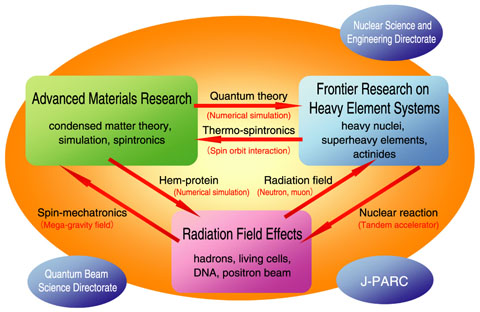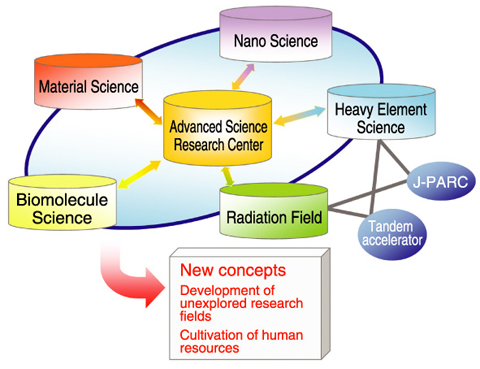
Fig.7-1 Cooperative framework of the Advanced Science Research Center (ASRC)

Fig.7-2 ASRC as a center of excellence (COE)
Atomic energy science is essentially based on comprehensive research and development that covers the entire range from basic research to practical applications. It is thus particularly important to promote both goal-oriented and fundamental research programs to deal with a new phase of atomic energy in the coming decades as well as to solve today’s energy problems.
The Advanced Science Research Center (ASRC) has been conducting leading-edge research related to atomic energy sciences, for the discovery of new principles and phenomena, the creation of new materials, and for the development of innovative technologies. In FY2009, we achieved some prominent results: the analysis of superheavy atoms on an atom-at-a-time scale, the successful clarification of the mysterious properties of the uranium compounds, the development of isotope separation in a mega-gravity field, the exploration of amazing functions of microbes, and the development of a novel technique for investigating radiation damage in DNA. Details will be shown in the following sub-sections.
As a plan for the next 5-year term starting from FY2010, the ASRC intends to dedicate itself not only to conducting world leading basic research, but also to establishing an international center of excellence (COE) in basic sciences. To attain this ambition, we have decided to take up the following three research fields: (1) advanced materials science research, (2) frontier research on heavy element systems, and (3) research on radiation field effects.
The first research field consists of three themes: creating new functions of materials by means of numerical simulations, spin-transport mechanism and design in molecular spintronics systems, and spin-mechatronics combining quantum interaction between electron spin and mechanical torque in solids. For the second field, the following four subjects have been set up: surrogate reactions via nucleon-transfer reactions in heavy nuclei, the valence electronic structure and nuclear shell structure of superheavy elements, preparation of new actinide compounds with exotic behavior, and foundation of a new concept in condensed matter physics for heavy element systems. The third field involves four themes: the structure of nuclei and hadrons with strangeness, the formation of actinide nanoparticles in biological reaction environments, the biophysical study of molecular and cellular responses to radiation, and surface low-dimensional materials study using advanced positron beams (Fig.7-1).
In order to promote the above leading-edge research and development, we cooperate not only within the ASRC and other divisions of JAEA but also with external scientific communities. In addition, through implementation of the Reimei Research Program, we conduct new research programs on a global basis and investigate innovative subjects together with other institutes (Fig.7-2).